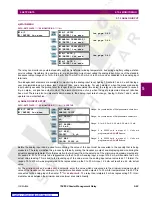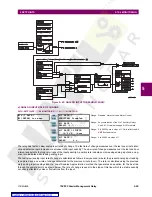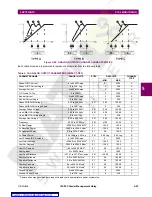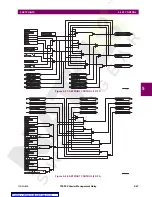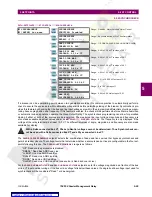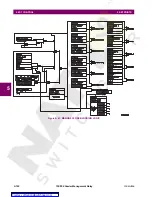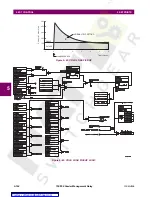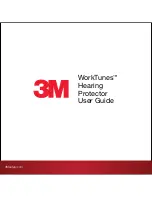
5-96
750/760 Feeder Management Relay
GE Multilin
5.8 S7 CONTROL
5 SETPOINTS
5
5.8S7 CONTROL
5.8.1 SETPOINT GROUPS
PATH: SETPOINTS
ÖØ
S7 CONTROL
Ö
SETPOINT GROUPS
All setpoints contained under the
S5 PROTECTION
setpoints page are reproduced in four groups, identified as Groups 1, 2, 3,
and 4. These multiple setpoints provide the capability of both automatic and manual changes to protection settings for dif-
ferent operating situations. Automatic (adaptive) protection setpoint adjustment is available to change settings when the
power system configuration is altered. By monitoring the state of a bus tie breaker on the bus connected to the associated
feeder breaker, different settings may be used depending the tie breaker state. Automatic group selection can be initiated
by use of a logic input. The manual adjustment capability is available for those users who use different settings for different
seasons of the year. Manual group selection can be initiated from the keypad or via communications.
In order to allow the display and editing of one group while another group is used for protection, two operating states have
been assigned to setpoint groups. The "Active Group" is used for protection, and is indicated by the appropriate faceplate
LED indicator being turned on continuously. The 'Edit' group is displayed and may be used to alter protection settings. It is
indicated by the appropriate faceplate LED indicator being flashed. If a single group is selected to be both the Active and
Edit group, the appropriate indicator is on continuously.
The setpoint group to be edited is selected through the
EDIT SETPOINT GROUP
setpoint. Group 1 is the default for the "Active
Group" and will be used unless another group is requested to become active. The active group can be selected with the
ACTIVE SETPOINT GROUP
setpoint or by logic input. If there is a conflict in the selection of the active group, between a set-
point and logic input, or between two logic inputs, the higher numbered group will be made active. For example, if the logic
inputs for Group 2, 3, and 4 are all asserted the relay would use Group 4. If the logic input for Group 4 then becomes de-
asserted, the relay will use Group 3. Any change from the default Group 1 will be stored in the event recorder.
In some application conditions, the user may require that the relay will not change from the present active group. This pre-
vention of a setpoint group change can be applied when any of the overcurrent (phase, neutral, ground, sensitive ground,
or negative sequence), overvoltage, bus or line undervoltage, or underfrequency elements are picked-up.
Pickup of a protection element is possible when selected to any function except "Disabled", so elements that are
not used to perform tripping can also inhibit setpoint changes. A setpoint change can also be prevented if the
breaker is open, so that a fault detected before a reclosure will not cause a group change while the breaker is open.
Each setpoint group includes the selection of Auxiliary Output Relays 3 to 7 that can be operated by the
protection features. As these relays are hard-wired to external equipment, the selection should only be
changed from that in setpoint Group 1 with considerable care.
SETPOINT GROUPS
[ENTER] for more
ACTIVE SETPOINT
GROUP: Group 1
Range: Group 1, Group 2, Group 3, Group 4
EDIT SETPOINT GROUP:
Active Group
Range: Group 1, Group 2, Group 3, Group 4, Active
Group
OPEN BRKR
INHIBIT: Disabled
Range: Enabled, Disabled
OVERCURRENT PICKUP
INHIBIT: Disabled
Range: Enabled, Disabled
OVERVOLTAGE PICKUP
INHIBIT: Disabled
Range: Enabled, Disabled
UNDERVOLTAGE PICKUP
INHIBIT: Disabled
Range: Enabled, Disabled
UNDERFREQ PICKUP
INHIBIT: Disabled
Range: Enabled, Disabled
ENTER
ESCAPE
ð
ð
MESSAGE
ESCAPE
MESSAGE
ESCAPE
MESSAGE
ESCAPE
MESSAGE
ESCAPE
MESSAGE
ESCAPE
MESSAGE
ESCAPE
N
OTE
C
A
UT
I
O
N


